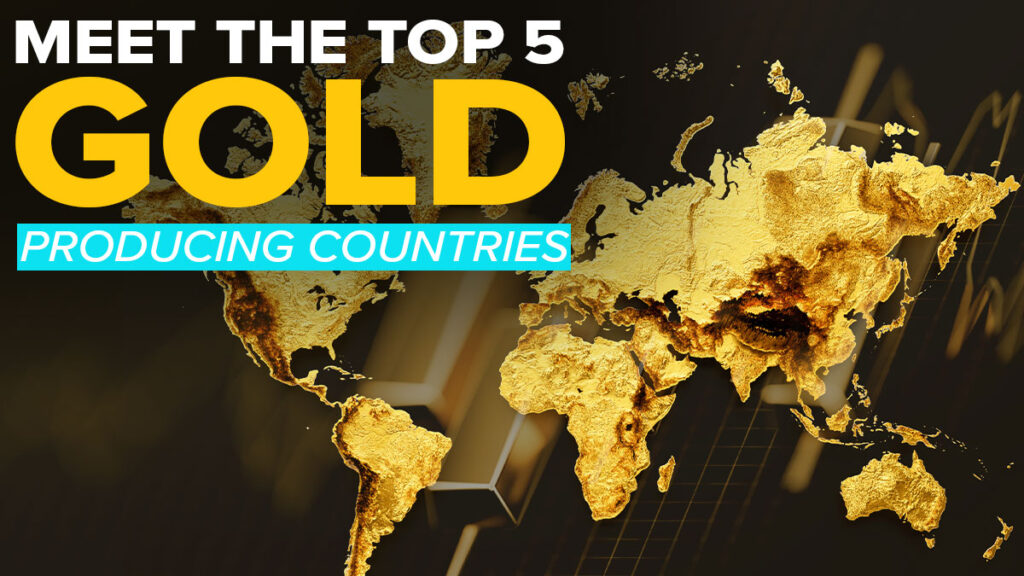
Will the Fed Achieve a Soft Landing in 2024?
Soft landings, it has been said, are the holy grail of monetary policy, and as we look ahead to 2024, there are signs that we may be on the cusp of one. But what does it mean for the economy to have a soft landing? And conversely, what constitutes a hard landing?
Simply put, a soft landing occurs when the Federal Reserve raises interest rates to curb inflation and manages to do so without triggering a sharp increase in unemployment or pushing GDP growth into negative territory.
A hard landing, on the other hand, is when interest rates rise and inflation decreases, but at the cost of a recession and high unemployment.
Achieving a soft landing is exceptionally challenging. Noted MIT economist Rudi Dornbusch (1942-2002) famously quipped: “None of the post-war expansions died of old age. They were all murdered by the Fed.” Indeed, out of nine tightening cycles over the past five decades, the bank successfully engineered a soft landing only twice. The other seven instances culminated in recessions.

Princeton economics professor Alan Blinder offers some hope. If the need to combat inflation is not too extreme, he writes in a recent article, the Fed has demonstrated its ability to orchestrate an economic landing that either avoids a recession or induces a relatively mild one. The central bank’s reputation for causing hard landings “derives mainly from conquering the 1970s inflation—which took three landings,” Blinder says.
The key to predicting the outcome in 2024 lies in economic indicators, especially as experts project the consumer price index (CPI) in the U.S. to decline to 2.7% while the Fed’s target rate is expected to reach 4.50% by the end of the year.
A Global Leader in Numerous Industries
Despite the occasional gloomy predictions and forecasts, investors should be cautious about buying into the “America-is-in-decline” narrative, Merrill points out in its weekly Capital Market Outlook.
America’s share of global gross domestic product (GDP), estimated at 26% for 2023, has increased from 24.8% at the start of the decade. Over the past four years, the U.S. economy has added an additional $6 trillion to its economic base, bringing total U.S. output to around $27 trillion this year. Most impressively, since the beginning of the decade, the S&P 500 has consistently outperformed most developed and emerging markets.

Investors have been treated to a promising holiday season, characterized by strong consumption.
Mastercard reports a year-over-year increase of +3.1% in U.S. retail sales, excluding automobiles, during the 2023 holiday shopping season from November 1 through December 24. This measure encompasses both in-store and online retail sales across all payment forms and is not adjusted for inflation.
Finally, the Santa Claus rally appears to be in place. This phenomenon describes a period where the stock market closes higher during the last five trading days of the current year and the first three trading days of the new year.
“Where else in the world is there an economy that leads or dominates in so many diverse industries, ranging from agriculture to aerospace, education to entertainment, and technology to transportation, to name just a few sectors?” asks Joseph Quinlan, head of Merrill’s market strategy.
I couldn’t have said it better myself.
Gold’s Prospects in a Soft-Landing Scenario
In the context of a potential soft landing, historical trends suggest that gold may not perform as strongly. According to the World Gold Council (WGC), soft landing environments have typically resulted in flat to slightly negative average returns for gold.
However, every cycle is unique, and 2024 may bring surprises.
Heightened geopolitical tensions in a key election year for many major economies, combined with continued central bank buying, could provide additional support for gold. Central banks and official institutions have played a pivotal role in boosting gold’s performance over the past two years, with the WGC estimating that excess central bank demand added 10% or more to gold’s gains in 2023. This trend is likely to persist, potentially providing an extra boost to gold prices in 2024.

In the event that a recession becomes a reality, weaker growth could help steer inflation back toward central bank targets, eventually leading to interest rate cuts. Such an environment has been conducive to both gold and high-quality government bonds, making them appealing options for investors, the WGC says.
As we approach 2024, it’s essential for investors to remain vigilant, monitor economic indicators closely and consider the various possibilities that lie ahead. While the prospect of a soft landing offers optimism, the financial landscape remains subject to change.
By recognizing the strength of the U.S. in the global economy and staying attuned to market dynamics, investors can position themselves for success in the coming year.

Index Summary
- The major market indices finished mixed this week. The Dow Jones Industrial Average gained 0.81%. The S&P 500 Stock Index rose 0.33%, while the Nasdaq Composite climbed 0.12%. The Russell 2000 small capitalization index lost 0.29% this week.
- The Hang Seng Composite gained 4.44% this week; while Taiwan was up 1.90% and the KOSPI rose 2.13%.
- The 10-year Treasury bond yield fell 1 basis point to 3.88%.
Airlines and Shipping
Strengths
- The best performing airline stock for the year was SkyWest, up 216.4%. Chinese domestic travel was strong this year, with domestic air ticket spending tracking 30% above pre-COVID levels (pricing and traffic +15% above pre-COVID levels). Japan saw strong domestic leisure and inbound volumes with holiday reservations at pre-COVID levels.
- Contrary to the continuing downtrend in spot rates, share prices of Japan’s Big 3 shippers outperformed TOPIX by 10% in 2023. The reasons behind this include: 1) relatively close interest in dividend yields which are much higher than for Japanese stocks in other industries, and 2) the current turnaround in dry bulk market prices (due to the positive effects of China reopening).
- Southwest Airlines revised its December quarter revenue outlook to the better end of its prior range due to stronger-than-expected close-in bookings. The company expects unit revenue to be down 9% to 10% year-over-year versus down 9% to 11% prior. JetBlue published an investor update narrowing its fourth quarter net loss per share guidance to ($0.25) to ($0.35) from ($0.35) to ($0.55) prior. The improved outlook was primarily driven by better-than-expected revenue trends with top-line guidance now down 5.5% at the midpoint versus -8.5% prior.
Weaknesses
- The worst performing airline stock for the year was Frontier, down 46.9%. Domestic leisure fares trended down during 2023. Airlines with a larger component of long-haul international traffic continue to see strong demand, but there have been warning signs of pricing declines. ARC Corporation reported domestic fares declined 6.5%. This data only reflects agency sales and misses web sales, but the trend may continue through at least mid-2024.
- According to Drewry Maritime Research, the order book stands at more than 900 ships, with deliveries in 2024 expected to add 1.4 million TEUs (twenty-foot equivalent units, a standard measure of cargo capacity). That’s equal to about 5% of the current global total. New capacity is expected to increase by a record 2 million TEUs in 2024 and 2.1 million in 2025 to reach 27.2 million, up almost 50% from a decade earlier, according to Drewry.
- Regarding the Pratt and Whitney jet engine issue, the FAA estimates 20 engines are affected on U.S.-registered aircraft. Pratt has instructed operators to remove affected engines for inspection and Raytheon has indicated that 200 engines meet these criteria; therefore, the 20 engines are the U.S. portion of this 200. Among U.S. operators, Spirit Airlines said that it has 13 of the 200 engines with potentially four more at JetBlue.
Opportunities
- Alaska Airlines entered into a definitive agreement to acquire Hawaiian for $18 per share in an all-cash transaction. The deal represented a total equity value of $1 billion, in addition to the assumption of $900 million of Hawaiian’s net debt, for a total transaction value of $1.9 billion. The combined company plans to operate the brands of Alaska Airlines and Hawaiian Airlines separately while integrated under a single operating certificate, collective bargaining agreement for each labor group, and loyalty platform. Management expects $235 million of run-rate synergies or 2% of combined 2023 revenue.

- Based on Clarkson’s data, average sailing speeds in 2023 were 14.5 knots for vessels larger than 8,000 TEU, 12% lower than the 2013-2019 average. Assuming a vessel spends, on average, 30% of the trip duration in port, a further 10% decline in speed could take out 7% incremental capacity.
- Travel budget expectations increased in 2023, with improvement expected to continue into 2024. Next year’s budgets are expected to be up nearly 8.5% year-over-year, signaling that there is still room for recovery and/or growth.
Threats
- Alaska Airlines cited approximately one-third of its revenues are tied to California, a region it expects to remain weak in 2024. Similarly, given its larger corporate exposure to tech companies (38% of corporate business), West Coast business remains less recovered than other regions.
- According to Morgan Stanley, the volume of newly built container ships in 2023 was 11% of its forecast for new supply in 2023. The group expects concerns about supply/demand deterioration due to pressure from the supply of new ships to kick in fully at some point.
- According to Cowen, an overcapacity situation is developing in the North Atlantic that could likely lead to lower air fares. U.S. airlines were among the first to add back international capacity after the pandemic. European airlines increased capacity for summer 2024. Cowen forecast that airlines will grow capacity to Europe by 8.6% for the first nine months of 2024 versus 2023. For the entire region (including India, the Middle East, and Africa), the group forecasts an increase of 7.4%, which follows an increase of 18.3% in the nine months ending September 2023.
Luxury Goods and International Markets
Strengths
- Despite predictions of a recession in 2023, the U.S. economy has proven resilient and appears poised for continued strength in 2024. During the third quarter of the current year, the GDP experienced an impressive, annualized growth rate of nearly 5%. This remarkable expansion can be attributed to vigorous consumer spending and a robust employment landscape. Additionally, yields have likely increased while inflation is on a downward trajectory. In a surprising move, the Federal Reserve announced its intent to implement rate cuts next year, further boosting economic prospects.
- In 2023, the most expensive luxury vehicle sold at auction was a 1962 Ferrari 250 GTO, with a price tag of $51.7 million. This was also the most expensive car ever sold at auction from the Italian manufacturer. The record-breaking sale took place at Sotheby’s in New York as the car was offered publicly for the first time in 38 years.

- Royal Caribbean and Carnival Corporation, two cruise line companies, emerged as top performers within the S&P Global Luxury Index in 2023, posting impressive gains of 161.97% and 130.02%, respectively. They were among the hardest-hit stocks during the COVID-19 pandemic, and as the pandemic ended allowing people to travel again, they recorded massive gains.
Weaknesses
- Stocks trading on the Hong Kong Stock Exchange (measured by the HSCI Index) declined 10.69% this year, while equities trading on the mainland (measured by the SHCOMP Index) lost 3.85%. China’s economy is encountering difficulties in achieving its targeted growth rate, facing multifaceted challenges throughout the year, including escalating geopolitical tensions, mounting debt issues, and a slower post-pandemic recovery.
- In addition to China, the Eurozone underperformed. The region is expected to see 0.8% growth in 2023, down from the 1.1% that had been previously predicted. It is expected to post growth of 1.3% in 2024, down from 1.6% forecast. The 20-member bloc entered a recession in the first quarter of the year. The economic slowdown is a result of weakened demand due to high inflation rates, the European Commission said. Germany, the largest economy in Europe, has been hit by higher energy prices and slowing demand in China.
- Faraday Future Intelligent Electric Inc., a California-based global shared intelligent electric mobility ecosystem company, was the worst performing S&P Global Luxury stock this year, losing 99.01% in 2023. At the beginning of the year, the company finally unveiled its long-anticipated luxury electric car, the FF 91 Futurist. The FF 91 2.0 Futurist Alliance, a high-end SUV, had a starting price of $309,000, while other versions of the FF 91 began at $249,000. To cope with the high production costs and slow deliveries, especially given the hefty price tags, the company has been actively seeking additional funding.
Opportunities
- Lower-than-anticipated inflation figures in both the United States and the Eurozone could indicate that central banks might conclude their tightening measures. During its December gathering, the Federal Reserve caught many market watchers off guard by proposing multiple interest rate reductions in 2023. This could lead to a further decline in yields and an uptick in equity markets.
- The global luxury industry witnessed robust expansion in the preceding year, but it is showing signs of deceleration this year, with the possibility of reaching its lowest point in the first quarter of 2024. According to RBC Capital Markets, luxury sector sales are forecasted to reach their lowest point in the first quarter of 2024, followed by an improvement in the latter half of the year. On a sector-specific basis, RBC anticipates an average growth rate of 9% in its sporting goods segment and an average of 5% in the luxury sector.

- CLSA, one of Asias top brokers, predicts that the global luxury goods sector will grow 6.5% from 2022 to 2025, slightly surpassing the 5.5% growth over the past two decades. This will be driven by Chinese demand recovery on the back of reopening and outbound travel resumption. In 2019, the Chinese comprised one-third of the global personal luxury sales at $92 billion, and it will continue to rise, reaching EUR100 billion by 2025.
Threats
- Bain & Company, a consulting group in the luxury sector, said that the sector is experiencing normalization. Last year the sector was able to grow on average at 20%. This year the growth rate should be around 8-9%, much closer to the long-term average of 6%. The group expects the growth to slow down next year to 4-5%, below its long-term average. Bain & Company expects a slower first half of 2024 and a stronger end to the year.
- The conflict in Europe is approaching its second year, while tensions between Israel and Hamas have extended to Europe, causing disruptions for both locals and visitors alike. Local authorities in major European cities such as London, Paris, Madrid, and Rome have heightened security measures in response to clashes that erupted after Israel was started. Notably, in France, a key hub for numerous luxury companies, security concerns have led to the evacuation of prominent sites like the Louvre Museum, in addition to affecting several airports. Ongoing unrest and geopolitical tensions have the potential to adversely impact global consumer spending.
- China’s projected gross domestic product (GDP) growth for the upcoming year could decelerate to 4.6%, down from the 5.2% recorded in 2023. This potential slowdown may be attributed to persistent global geopolitical tensions and domestic obstacles within the property sector. Furthermore, China grapples with structural challenges stemming from an aging population, elevated youth unemployment rates, and mounting debt issues. Given its significance as a market for luxury goods, a decline in consumer spending within China could exert adverse effects on the high-end sector.

Energy and Natural Resources
Strengths
- The best performing commodity for the year was uranium, rising 82.89%, as proxied by the Sprott Physical Uranium Trust. According to RBC, uranium prices moved higher in 2023 as activity picked up, with a pick-up in financial/company buying and utility interest. On the news front, Euratom released its Annual Supply report which highlighted a projected moderate increase in uranium requirements and decrease in inventories, while uranium requirements in the EU are generally covered by contracts through 2025. In addition, the French government and state-utility EDF agreed on a deal for nuclear power prices that should help support nuclear build-out plans while tempering price volatility for consumers.

- Iron ore was the second-best performing commodity followed by sugar and then coffee in 2023. Disruption to sugar-sourced crops has been plagued by weather and key producing countries most notably India, Thailand, China, and Pakistan. A lack of rainfall in Brazil may lead to stressed crops with lower yields while the Intercontinental Exchange (ICE) warehouse stocks remain near 24-year lows.
- Copper rebounded with other risk assets in 2023 after U.S. jobs data was seen as supporting the case for the Federal Reserve to start cutting interest rates next year. The metal climbed as the figures underscored a gradual cooling in the U.S. labor market. Copper was strong after the closure of a major mine in Panama highlighted future supply challenges for the red metal as the energy transition accelerates. Panama’s government said it will shut the Cobre mine owned by First Quantum Minerals, damping hopes that the company might be able to reach a new deal to keep it operating. The project, the subject of mass protests from environmentalists and labor unions, produces about 1.5% of the world’s supply of this industrial metal.
Weaknesses
- The worst performing commodity for the year was lithium carbonate, dropping 81.95%, following its price gains of 87.21% in 2022 and 428.47% in 2021. According to JPMorgan, in 2024, the group is most constructive on energy, but unlike 2023, returns will be driven by oil (which has downside risk)—whereas U.S. natural gas prices are forecasted to decline 40% by year-end 2024. Natural gas was the second-worst performing commodity, falling 49.31%, for the year.
- Glencore Plc said it will produce almost 10% less nickel in 2024 than previously forecast, potentially supporting slumping prices of the key battery making ingredient. Nickel, used in both batteries and stainless steel, traded near a two-year low in 2023 after suffering a steady decline as a wave of new production from Indonesia overwhelms sputtering demand. Nickel was the third-worst performing commodity for the year, falling 44.80%
- According to Morgan Stanley, there were drought conditions in Argentina. As a result, cultivated acreage and yields will be worse than previous expectations in the country, the world’s third largest soy producer and fourth largest corn producer. Argentina’s production fell 18% for soy and down 19% for corn.
Opportunities
- Bank of America believes Big Oil’s redemption roadmap will keep unfolding for those finding the following three signposts: 1) Continued capex discipline (below average 7% growth in Big Oil budgets); 2) instead favoring shareholder distributions (the bank sees average CFFO payouts climb to 33% in 2024); 3) underestimated cash flow resilience from earnings per share support from above-average buybacks.
- Clean energy developers are expected to install a record amount of solar power in the U.S. in 2024 as the industry recovers from supply-chain and trade obstacles. The solar industry is projected to add 32 gigawatts of capacity in 2024, an amount equal to about 30 new nuclear reactors, according to a report by the Solar Energy Industries Association Inc. and Wood Mackenzie Ltd.
- Countries around the world are scrambling to secure shipments of the power plant and heating fuel from major exporters like Qatar and the U.S., but there is little new supply coming online before 2026. Meanwhile, Europe is racing to replace Russian pipeline gas with LNG, further exacerbating the global shortage of fuel. Roughly 30% of all LNG deliveries were via the spot market in 2023, according to the International Group of Liquefied Natural Gas Importers.
Threats
- The global lithium market is facing a supply crunch toward the end of this decade amid wider adoption of electric vehicles, with more than $51 billion in investments needed to meet future demand of rechargeable batteries, according to Benchmark Mineral Intelligence. “We need to move urgently here or we’re going to have massive problems meeting the demands of the auto industry,” Chief Operating Officer Andrew Miller told a seminar.
- Coal demand is likely to continue to decline. Electricity generated from U.S. solar and wind systems will surpass power produced by burning coal for the first time in 2024, driven by surging panel installations. Coal will produce about 599 billion kilowatt-hours in 2024, according to government data released Tuesday. That will be down from 669 billion kilowatt-hours in 2023 as utilities continue to shutter coal-burning power plants.
- According to UBS, in 2023, aluminum has faced headwinds from weak demand (accentuated by protracted destocking in Europe/U.S.), sustained increases in Chinese smelter production and cost curve deflation; but after sustained downward pressure in 2023, the LME price has stabilized in a $2,100-2,300 per ton range and could remain there in 2024.
Bitcoin and Digital Assets
Strengths
- Bitcoin soared in 2023, climbing over 150% and proving to investors that it had the potential to recover following industry scandals such as Sam Bankman-Fried’s FTX collapse.

- As reported by CNBC, Bitcoin’s rally in 2023 helped to drive some of the stock market’s biggest gains this year. In fact, shares of Coinbase, MicroStrategy, and the Grayscale Bitcoin Trust (which are tied closely to the digital currency), all did substantially better than Bitcoin.
- As 2023 comes to an end, the Ethereum blockchain is now secured by over 20% of the supply of ether (ETH) in the world, and 40% of that is managed by Lido, a staking derivatives protocol, according to Axios.
Weaknesses
- One of the more bizarre crypto stories of the year, according to CoinTelegraph, includes copycat NFTs. In October, a United States district court judge ordered Ryder Ripps and Jeremy Cahen to pay $1.57 million in damages to Yuga Labs for copying the Bored Apes Yacht Club (BAYC) nonfungible tokens (NFTs).
- The U.S department of Justice settled with crypto exchange Binance, concluding a criminal investigation into allegations of money laundering and sanctions violations. The settlement involved $4.3 billion in penalties, marking one of the largest corporate settlements in U.S history, writes The Block.
- Sam Bankman-Fried, the former CEO of FTX, was convicted on all seven criminal counts on November 2 of this year, including wire fraud and conspiracy to defraud FTX customers. He now faces a maximum sentence of 115 years in prison, with Judge Lewis Kaplan scheduling sentencing for March 28, 2024, according to The Block.
Opportunities
- The United States District Court in the Southern District of New York granted a partial victory to Ripple Labs in the SEC case dating back to 2020. Judge Analisa Torres ruled that XRP is not a security when traded on digital asset exchanges but is a security when sold to institutional investors. Initially, the SEC fought to restrict Ripple’s token offering due to its alleged unregistered security status, according to CoinTelegraph.
- BlackRock’s spot Bitcoin ETF was listed on the Depository Trust & Clearing Corporation, which suggests the potential for approval by the United States SEC. The SEC has until January 10, 2024, to decide on Blackrock’s application.
- Hong Kong facilitated crypto trading for retail investors but with some limitations. Only certain types of tokens, such as security tokens, are allowed and only on platforms that are licensed and regulated by the Securities and Futures Commission, according to Analytics Insight.
Threats
- U.S presidential candidate Ron DeSantis has reaffirmed his opposition to central bank digital currencies (CBDCs), pledging to ban them in the U.S. if he is elected. DeSantis declared, “On day one, I will nix central bank digital currencies. Done. Dead. Not happening in this country.” He previously signed a bill in Florida prohibiting federal CBDCs and foreign CBDCs, writes CoinTelegraph.
- Changpeng Zhao, commonly known as “CZ”, co-founder of Binance, agreed to step down as CEO as part of a plea deal with the DOJ. Zhao pleaded guilty to violations of the Bank Secrecy Act and will pay a $50 million fine and potentially face a prison sentence of up to 18 months, writes The Block.
- Su Zhu, co-founder of the defunct crypto hedge fund Three Arrows Capital, was arrested at Singapore’s Changi Airport in September for failing to comply with a liquidation investigation, according to The Block.

Gold Market
This year gold futures closed at $2,073.20, up $152.30 per ounce, or 7.93%. Gold stocks, as measured by the NYSE Arca Gold Miners Index, ended the year higher by 8.72%. The S&P/TSX Venture Index came in off 3.05%. The U.S. Trade-Weighted Dollar fell 2.10%.
Strengths
- The best performing precious metal for the year was gold, up 7.93%. The yellow metal is up for the year, after two years of losses, while the dollar is down, falling 5% just in the last two months of the year. The greenback has weakened as U.S. interest rates are near a peak and the Federal Reserve’s aggressive tightening begins to take a toll on the world’s largest economy, investors say.

- Goldman thinks there will be continued focus on M&A in the gold sector given the supportive gold price environment and strong balance sheet positions, including potential impacts to NAV upon the proposed implementation of the Global Minimum Tax in 2024. Goldman views the gold streaming/royalty companies as attractive business models given the elevated gold price environment and flattish cost structure, underpinning 70-80% EBITDA margins and above gold mining peers of 40-50%.
- The merger of Newmont and Newcrest will be the largest gold company in the world, with a market cap of $57 billion, producing 8-8.5 million ounces gold per annum at AISC of $1,065 per ounce, with total gold reserves of 155 million ounces and total resources of 333 million ounces, with a mine life of 17. The proposed offer appears accretive to NAV and relatively neutral to near-term financial metrics based on consensus estimates.
Weaknesses
- The worst performing precious metal for the year was palladium, down 40.35%. Palladium dropped to the lowest levels in five years as demand falters amid a slowdown in car sales, the rise of electric vehicles, and as users switch to cheaper platinum. The metal, which is almost entirely used in catalytic converters that curb emissions, has slumped this year as slowing economic growth hurt global automobile sales.
- Most companies assume inflationary pressures seen in 2023 will persist into 2024, but slowly taper off thereafter. Newmont’s five-year outlook, which saw long-run cash costs increase $50 per ounce, or around 7% from the prior guide, and sustaining capex up $175 million annually. Higher gold prices will be needed to offset this.
- The value of polished diamond stone exports from India – a proxy for demand – was down 31% this year, while volumes decreased by 29%, implying aggregate prices declined possibly due to a mix change. Polished diamond export volumes and value came in below the five-year average.
Opportunities
- Yamana’s founder Peter Marrone commented that the gold sector will likely see more M&A as miners look to maintain margins in a higher cost and lower gold grade environment. He says, “The gold price today is roughly where it was in late 2020…but interestingly, the margins have decreased quite substantially for almost all of the companies.” According to Marrone, “It seems to me, that we are going into universally lower grades, higher costs, inflationary impacts,” he continued, meaning “any form of consolidation is a smart one.”
- According to Google Trends data, the phrase “how to buy gold” has reached record levels in the U.S. (even higher than when gold prices reached all-time highs in 2020). Investors are concerned about sticky inflation, elevated interest rates for longer, and/or a potential recession – these are all scenarios that historically have been positive for gold. When the economy is unstable, as many investors felt throughout the year, consumers turn to the yellow metal, and 2023 was no different. Some of the nation’s biggest retailers like Costco, Walmart and Amazon all sold gold bars, and many times sold out, this year.

- Measured using the ratio of gold prices to S&P 500 total returns, the metal has comfortably come out on top from the start to the end of each of the past three U.S. recessions. During the 2000 recession, the ratio went from 0.15 to 0.17 over the period defined by NBER. During the global financial crisis, it nearly doubled from 0.34 to 0.62, and in the Covid recession, it climbed from 0.23 to 0.28.
Threats
- Morgan Stanley’s historical analysis on gold, which has focused on real yields versus real gold price, has been shifting. Running this analysis had an R-Square of 92% in 2018-2021, which fell to 63% in 2022 and is now just 30%. This would imply gold somewhere below $1,300 per ounce. Morgan Stanley’s price forecasts have pushed out the timing of peak prices and brought targets down modestly, now calling for gold to reach $2,100 per ounce by the first quarter 2024.
- Gold purchases in India dropped to the lowest since the Covid-19 pandemic hit the second-biggest consuming nation in 2020, with high domestic prices deterring buyers. Indians are expected to have bought between 650 and 750 tons of the precious metal in 2023, said P.R. Somasundaram, the regional chief executive officer for India at the World Gold Council. The range is lower than the 774 tons bought in 2022 and the least since the 446 tons purchased in 2020, according to the London-based group’s data.
- According to Bank of America, when it comes to diamonds, the group believes that higher rates and weaker growth could put the consumer under pressure, translating into less diamond demand and downward pressure on prices. The bank now models slower price recovery.


U.S. Global Investors, Inc. is an investment adviser registered with the Securities and Exchange Commission (“SEC”). This does not mean that we are sponsored, recommended, or approved by the SEC, or that our abilities or qualifications in any respect have been passed upon by the SEC or any officer of the SEC.
This commentary should not be considered a solicitation or offering of any investment product. Certain materials in this commentary may contain dated information. The information provided was current at the time of publication. Some links above may be directed to third-party websites. U.S. Global Investors does not endorse all information supplied by these websites and is not responsible for their content. All opinions expressed and data provided are subject to change without notice. Some of these opinions may not be appropriate to every investor.
Holdings may change daily. Holdings are reported as of the most recent quarter-end. The following securities mentioned in the article were held by one or more accounts managed by U.S. Global Investors as of (09/30/2023):
Southwest Airlines
JetBlue Airways
Alaska Air Group
Hawaiian Holdings Inc.
Carnival Corporation
*The above-mentioned indices are not total returns. These returns reflect simple appreciation only and do not reflect dividend reinvestment.
The Dow Jones Industrial Average is a price-weighted average of 30 blue chip stocks that are generally leaders in their industry. The S&P 500 Stock Index is a widely recognized capitalization-weighted index of 500 common stock prices in U.S. companies. The Nasdaq Composite Index is a capitalization-weighted index of all Nasdaq National Market and SmallCap stocks. The Russell 2000 Index® is a U.S. equity index measuring the performance of the 2,000 smallest companies in the Russell 3000®, a widely recognized small-cap index.
The Hang Seng Composite Index is a market capitalization-weighted index that comprises the top 200 companies listed on Stock Exchange of Hong Kong, based on average market cap for the 12 months. The Taiwan Stock Exchange Index is a capitalization-weighted index of all listed common shares traded on the Taiwan Stock Exchange. The Korea Stock Price Index is a capitalization-weighted index of all common shares and preferred shares on the Korean Stock Exchanges.
The Philadelphia Stock Exchange Gold and Silver Index (XAU) is a capitalization-weighted index that includes the leading companies involved in the mining of gold and silver. The U.S. Trade Weighted Dollar Index provides a general indication of the international value of the U.S. dollar. The S&P/TSX Canadian Gold Capped Sector Index is a modified capitalization-weighted index, whose equity weights are capped 25 percent and index constituents are derived from a subset stock pool of S&P/TSX Composite Index stocks. The NYSE Arca Gold Miners Index is a modified market capitalization weighted index comprised of publicly traded companies involved primarily in the mining for gold and silver. The S&P/TSX Venture Composite Index is a broad market indicator for the Canadian venture capital market. The index is market capitalization weighted and, at its inception, included 531 companies. A quarterly revision process is used to remove companies that comprise less than 0.05% of the weight of the index, and add companies whose weight, when included, will be greater than 0.05% of the index.
The S&P 500 Energy Index is a capitalization-weighted index that tracks the companies in the energy sector as a subset of the S&P 500. The S&P 500 Materials Index is a capitalization-weighted index that tracks the companies in the material sector as a subset of the S&P 500. The S&P 500 Financials Index is a capitalization-weighted index. The index was developed with a base level of 10 for the 1941-43 base period. The S&P 500 Industrials Index is a Materials Index is a capitalization-weighted index that tracks the companies in the industrial sector as a subset of the S&P 500. The S&P 500 Consumer Discretionary Index is a capitalization-weighted index that tracks the companies in the consumer discretionary sector as a subset of the S&P 500. The S&P 500 Information Technology Index is a capitalization-weighted index that tracks the companies in the information technology sector as a subset of the S&P 500. The S&P 500 Consumer Staples Index is a Materials Index is a capitalization-weighted index that tracks the companies in the consumer staples sector as a subset of the S&P 500. The S&P 500 Utilities Index is a capitalization-weighted index that tracks the companies in the utilities sector as a subset of the S&P 500. The S&P 500 Healthcare Index is a capitalization-weighted index that tracks the companies in the healthcare sector as a subset of the S&P 500. The S&P 500 Telecom Index is a Materials Index is a capitalization-weighted index that tracks the companies in the telecom sector as a subset of the S&P 500.
The Consumer Price Index (CPI) is one of the most widely recognized price measures for tracking the price of a market basket of goods and services purchased by individuals. The weights of components are based on consumer spending patterns. The Purchasing Manager’s Index is an indicator of the economic health of the manufacturing sector. The PMI index is based on five major indicators: new orders, inventory levels, production, supplier deliveries and the employment environment. Gross domestic product (GDP) is the monetary value of all the finished goods and services produced within a country’s borders in a specific time period, though GDP is usually calculated on an annual basis. It includes all private and public consumption, government outlays, investments and exports less imports that occur within a defined territory.
The S&P Global Luxury Index is comprised of 80 of the largest publicly traded companies engaged in the production or distribution of luxury goods or the provision of luxury services that meet specific investibility requirements.
The STOXX Europe 600 Index is derived from the STOXX Europe Total Market Index (TMI) and is a subset of the STOXX Global 1800 Index. With a fixed number of 600 components, the STOXX Europe 600 Index represents large, mid and small capitalization companies across 17 countries of the European region.
The Dow Jones Global Emerging Index measures the performance of stocks that trade in emerging markets. It represents approximately 95% of the float-adjusted market capitalization of the countries covered by index.
The FTSE Developed Index is a market cap weighted index representing the performance of the large & mid cap stocks from the developed countries within the FTSE Global Equity Index Series.
The SSE Composite Index also known as SSE Index is a stock market index of all stocks that are traded at the Shanghai Stock Exchange.































